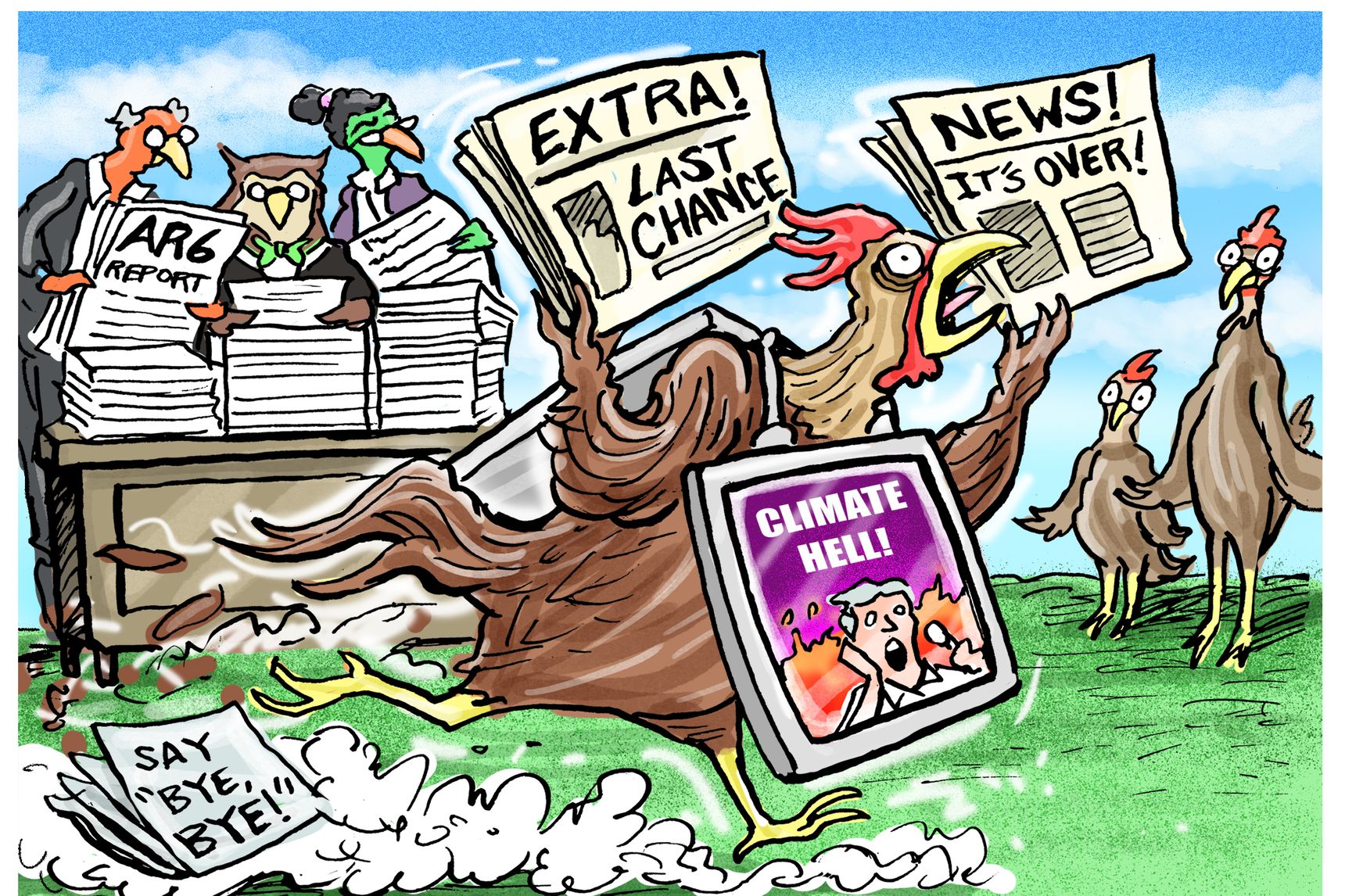By
The Intergovernmental Panel on Climate Change has issued its latest report assessing the state of the climate and projecting its future. As usual, the media and politicians are exaggerating and distorting the evidence in the report. They lament an allegedly broken climate and proclaim, yet again, that we are facing the “last, best chance” to save the planet from a hellish future. In fact, things aren’t—and won’t be—anywhere near as dire.
The new report, titled AR6, is almost 4,000 pages, written by several hundred government-nominated scientists over the past four years. It should command our attention, especially because this report will be a crucial element of the coming United Nations Climate Change Conference in Glasgow. Leaders from 196 countries will come together there in November, likely to adopt more-aggressive nonbinding pledges to reduce greenhouse-gas emissions.
Previous climate-assessment reports have misrepresented scientific research in the “conclusions” presented to policy makers and the media. The summary of the most recent U.S. government climate report, for instance, said heat waves across the U.S. have become more frequent since 1960, but neglected to mention that the body of the report shows they are no more common today than they were in 1900. Knowledgeable independent scientists need to scrutinize the latest U.N. report because of the major societal and economic disruptions that would take place on the way to a “net zero” world, including the elimination of fossil-fueled electricity, transportation and heat, as well as complete transformation of agricultural methods.
It is already easy to see things in this report that you almost certainly won’t learn from the general media coverage. Most important, the model muddle continues. We are repeatedly told “the models say.” But the complicated computer models used to project future temperature, rainfall and so on remain deficient. Some models are far more sensitive to greenhouse gases than others. Many also disagree on the baseline temperature for the Earth’s surface.
The latest models also don’t reproduce the global climate of the past. The models fail to explain why rapid global warming occurred from 1910 to 1940, when human influences on the climate were less significant. The report also presents an extensive “atlas” of future regional climates based on the models. Sounds authoritative. But two experts, Tim Palmer and Bjorn Stevens, write in the Proceedings of the National Academy of Sciences that the lack of detail in current modeling approaches makes them “not fit” to describe regional climate. The atlas is mainly meant to scare people.
As is now customary, the report emphasizes climate change in recent decades but obscures, or fails to mention, historical precedents that weaken the case that humanity’s influence on the climate has been catastrophic. The Summary for Policy Makers section says the rate of global sea-level rise has been increasing over the past 50 years. It doesn’t mention that it was increasing almost as rapidly 90 years ago before decreasing strongly for 40 years.
Extreme weather events are invoked as proof of impending disaster. But the floods in Europe and China and record temperatures across regions of the U.S. are weather, not climate—singular events, not decadeslong trends. Both Europe and China have experienced equally devastating floods in past centuries, but these are forgotten or deliberately ignored. The drought and wildfires in the Western U.S. are part of a trend going back a few decades, but forest management and expanding human presence in the forests are perhaps more important than climate change in causing these events.
The report expresses low confidence in most reported hurricane trends over the next century, and it remains uncertain whether there’s any trend beyond natural variability in Atlantic hurricanes. In other words, we have no scientific proof that humans have made hurricanes worse, despite what many say.
Refreshingly, the report deems its highest-emissions scenarios of the future unlikely, even though those are the ones you’re mostly likely to hear about in media reports. The more plausible scenarios have an average global temperature in 2100 about 2.5 degrees celsius warmer than the late 1800s. The globe has already warmed 1 degree since that time, and the parties of the Paris Accord arbitrarily agreed to limit further warming to another degree. But since humanity’s well-being has improved spectacularly, even as the globe warmed during the 20th century, it is absurd to suggest that an additional degree of warming over the next century will be catastrophic. In fact, the AR5 report from 2014 says even 1.5 degrees of additional warming by 2100 will have minimal net economic impact.
Good science is characterized by detail, data, proven models and reasoned debate. That takes time. Meanwhile, we should be wary of the torrent of hyperbole that is sweeping the globe.
To see this article and subscribe to others like it, choose to read more.
 Listen Online
Listen Online Watch Online
Watch Online Find a Station in Your Area
Find a Station in Your Area








 Listen Now
Listen Now Watch Online
Watch Online
